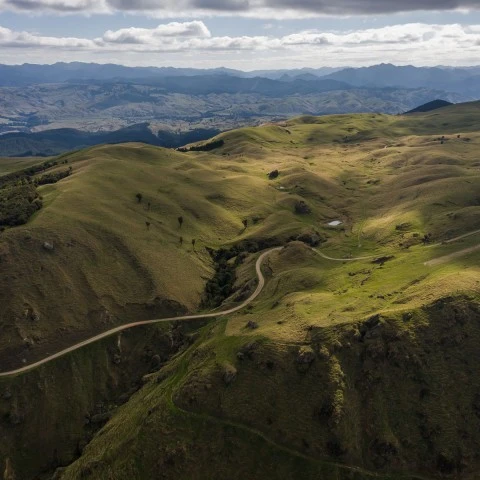Im-peck-able work at Harapaki
Building wind turbines while protecting taonga species

Building wind turbines while protecting taonga species
Hopefully by now, you know that our commitment to doing the right thing by nature goes beyond generating renewable energy. We’re committed to doing the best we can to help flora and fauna thrive in Aotearoa.
And what better place to start than at home, on the very assets where we generate electricity, or are planning to.
We’re excited that construction of our sixth windfarm, Harapaki, is well underway in the Hawke’s Bay’s Maungaharuru Range.
Harapaki will soon be home to 41 wind turbines – generating enough energy to power over 70,000 average households. Once completed, it’ll be Aotearoa’s second largest wind farm.
Before the turbines are ready to start generating electricity, there’s a lot of mahi to do (and we’re not just talking about the construction of the wind farm). First, we’ve got to find out about those that already call the Maungaharuru Range their home.
Before the construction of Harapaki kicked off, the project team undertook an ecological assessment of the area. The result was the identification of several nesting bird species within the project boundary. This included a considerable number of kāhu (harrier hawk), and the endangered native species kārearea (NZ falcon) and kererū (NZ wood pigeon), although these aren’t the only ones. The pīwakawaka (NZ fantail), pūtangitangi (paradise ducks), titipounamu (rifleman), tāringi (starling) and greenfinches all make themselves at home in the area.
Ensuring the survival of all these taonga species is a priority for us at Meridian. And so, all these birds were monitored for any potential impact from construction during the project planning.
Avifauna are the birds of a particular region or habitat. In this case, the kāhu, kārearea and kererū of the limestone escarpments of the Maungaharuru Range. The Harapaki project team created the avifauna monitoring programme with bird specialists scheduled to visit the site every six weeks for the duration of the project. They set up 21 monitoring stations across the site. This was quite a feat, as moving around the 1,235 hectares of high-altitude farmland within the Maungaharuru Range is not easy at the best of times.
The avifauna monitoring team is made up of specialists from a project ecologist team at Boffa Miskell (BML). But before engaging with this team, we identified the need to have a local expert on the ground, and so the team was joined by Cultural Monitor, Guy Te Kahika (Maungaharuru Tangitū).
Guy has a keen interest in bird watching and has assisted the Department of Conservation (DOC) with various other avifauna studies around the Hawke's Bay. With his 60 odd years of roaming those hills (he’s now 76 years of age), his local and cultural understanding of the area has formed an invaluable partnership with the specialist avifauna monitoring team.
The result of this work has allowed the Harapaki project team to build a clear picture of the avifauna presence around the site, to avoid disturbance during construction. The project team’s work will provide a base from which to continue ongoing monitoring of these birds once the wind farm is operational.
We’re very proud of the efforts going into the protection of the environment surrounding Harapaki.
It’s our hope that this mahi will result in the longevity and prosperity of the local whenua for generations to come. And this is just one example of how we’re working to protect nature. If you want to know more, check out how we’re making a difference in the South Island as well with our Project River Recovery and Elver trap and transfer programmes!